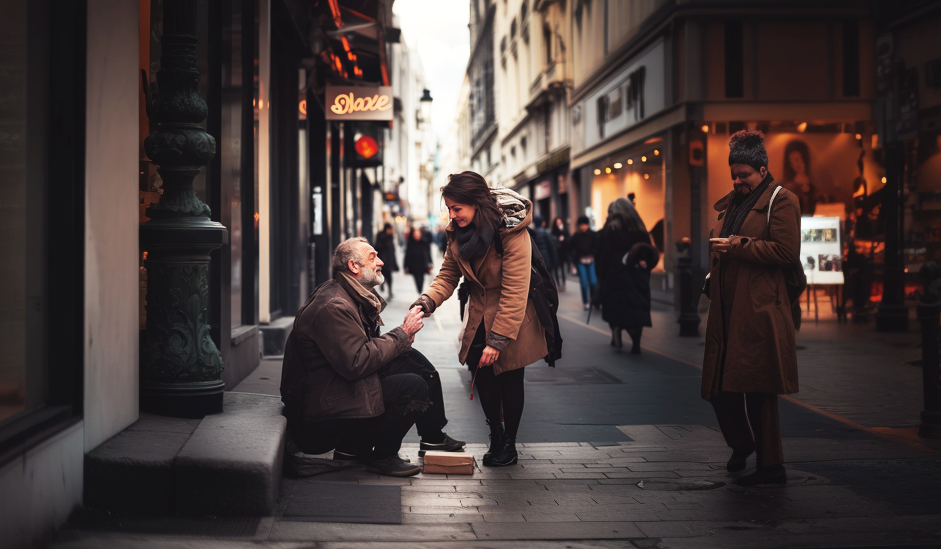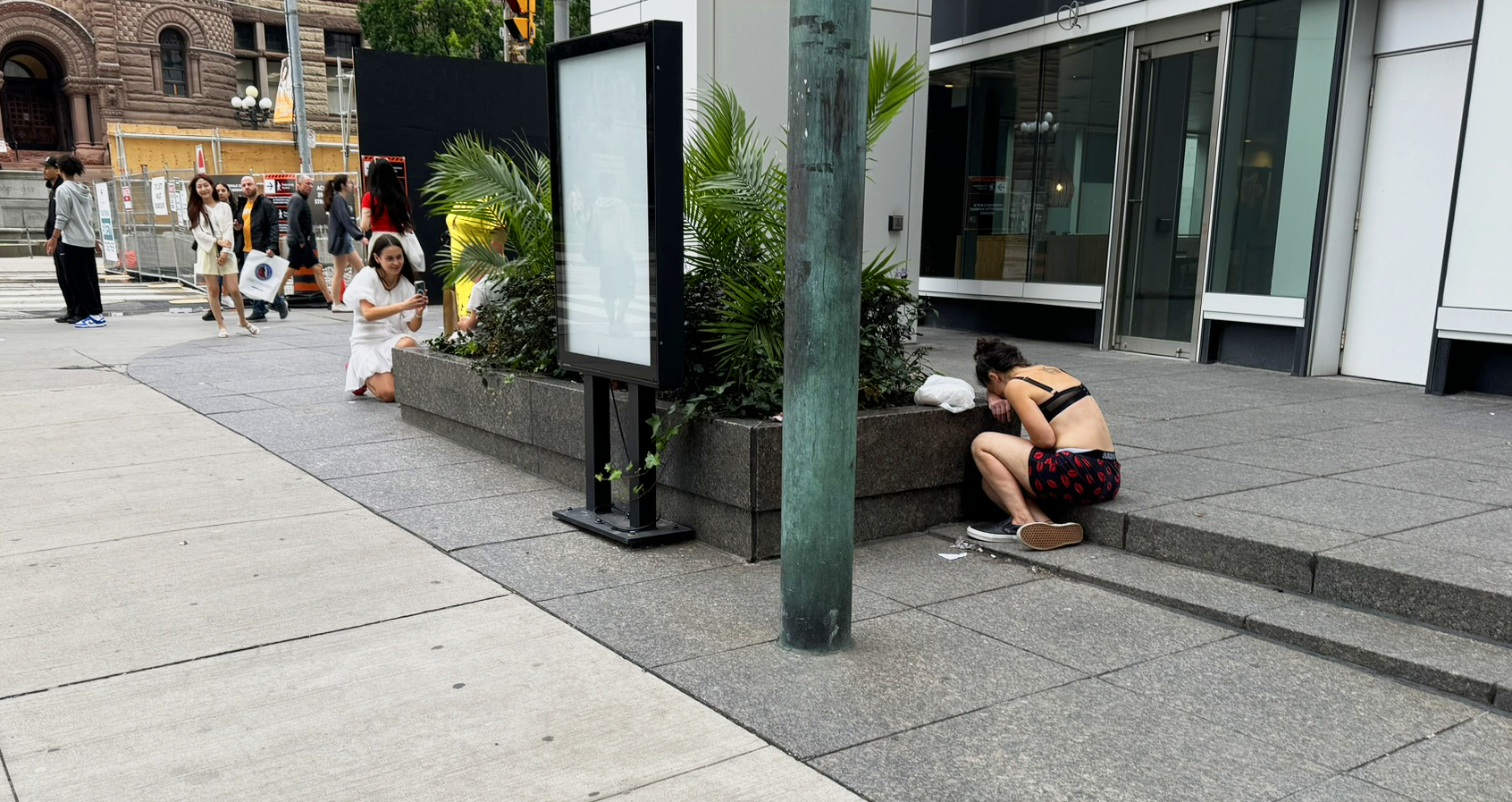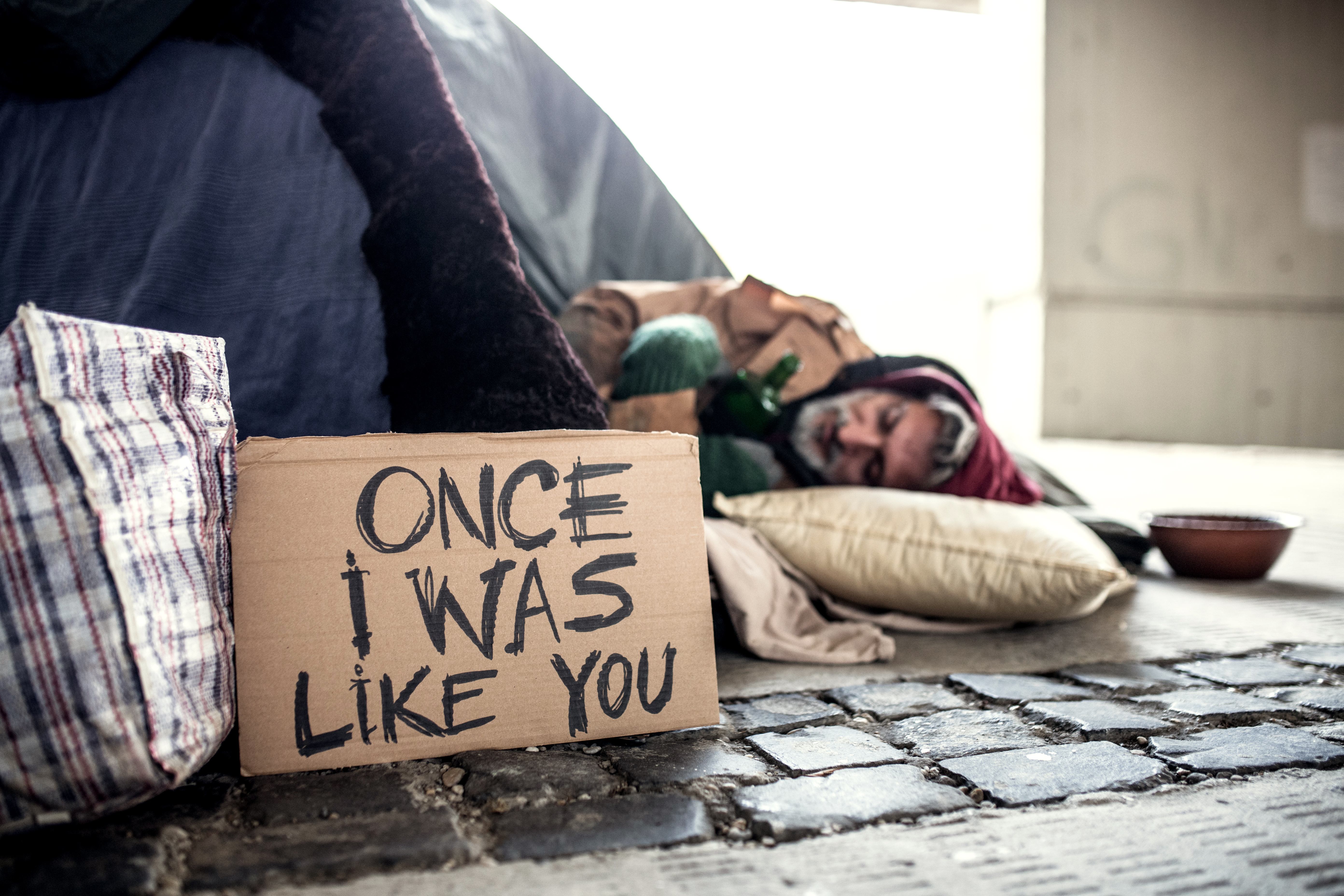Blog
The Power of Community: Inspiration Behind "The Giving App" to Combat Homelessness

Many years ago, around 2016, when I was working in the Financial District in downtown Toronto, I found myself deeply disturbed by the daily sight of homeless people sleeping on the street. It was a stark contrast—people living in extreme poverty amidst towering symbols of wealth and success.
I still remember one super-skinny and barely clothed lady sitting by the Eaton Center on Queen Street with an absent look in her eyes, looking like she had no life left in her. I felt horrible walking by her and not offering any help, grappling with a sense of helplessness and guilt. When did we normalize homelessness? Why do we just walk by people like that lady, as if she is not a human being?
As Canadians, we pride ourselves on being kind and polite, but there’s nothing kind about ignoring those in need.
I am sure many of us want to help–it’s only natural to feel compassion for other people–but then we come up with many excuses that allow us to go by without stopping: “I can’t afford to help everyone”, “Homelessness is too complex”, or “Isn’t this the government’s responsibility?”

Driven by my background in user research, I began to explore the issue of homelessness in greater depth. I spent weeks talking to people living on the street, trying to understand their stories.
One day, I encountered a new East Indian woman sitting at the corner of two major streets near my work. What struck me was how normal she looked, yet she was clearly homeless. I saw her at the same corner every day with all her belongings—dressed in nice clothes, wearing jewellery, and with suitcases full of her possessions.
I tried to talk to her a few times, but she was guarded and not very talkative. From our few conversations, I learned that she had lost her apartment due to a fraudulent deal and was clinging to the hope that a lawyer would soon resolve her situation.
As winter approached, I grew concerned, but she assured me she would be off the street by then. However, as the weeks passed and winter set in, she remained at that same corner. Her jewellery was gone, her clothes were dirty, and now she had that same empty look in her eyes that I’d seen in other people on the street.
When I asked why she wouldn’t go to a shelter, she explained that it wasn’t safe. I had heard similar concerns from other homeless individuals—things being stolen while they slept, drug use, women being assaulted, people yelling all night, and lice infestations. I could understand why someone would avoid shelters altogether, though in a Canadian winter, staying outside isn’t much of an option.
One time, I wanted to bring her a blanket, but before doing so, I asked if she needed one. “I don’t need another blanket!” she told me angrily, showing me a few blankets under her bags. “Everybody wants to give me blankets; where am I going to put them?” Surprised, I asked, “What do you need?” She replied, “Look at my feet!” I noticed she was wearing flip-flops on a very cold day. I realized I had shoes in her size at home.

This interaction was a turning point for me. It highlighted the importance of asking people what they actually need, rather than assuming. It also showed that helping someone could be as simple and straightforward as providing a pair of shoes.
When I got to work that day, I asked my co-workers if they had noticed the woman at the corner and that she wasn’t looking so good anymore. Everyone had noticed and found it sad, but they felt powerless. Many were fatigued by constant requests for money and already regularly donated to charities.
So I asked, “OK, what if I asked for non-monetary donations, like women’s shoes in size 7-8? Would you be able to help?” Everyone said yes. They mentioned having lots to give—kids’ toys, old clothes—and some offered their skills, like research, translation, driving someone to an interview, or even offering a room in their basement to someone in need, like a struggling student, if they knew it was safe to do so.
That conversation gave me hope and sparked the idea that would eventually become “The Giving App.”
Through my research and interactions with homeless people, I learned a few things:
Anyone Can Become Homeless: Many people live paycheck to paycheck, and a single event—like a job loss, health crisis, or divorce—can lead to homelessness.
Feeling Alone Is Crippling: Not everyone has a support system. Some problems are too big to handle alone, and not having anyone to turn to for help or advice can be overwhelming.
Shelters Aren’t Always Safe: Many avoid shelters due to safety concerns like theft, violence, or unsanitary conditions. Those who do go often find their situation worsens, with increased exposure to drugs, theft, or physical altercations.
Living on the Street Takes Its Toll: It doesn’t take long for a person’s mental and physical health to deteriorate on the street. The longer someone remains homeless, the harder it becomes to reintegrate into society. That’s why it’s crucial to provide support before people end up on the street.
Feeling Ashamed: Some people feel uncomfortable or ashamed asking for help and would only share their story if it could be done anonymously.
Human Connection Matters: We are more likely to help when we know someone’s story.
Non-Monetary Help Is Powerful: People are inherently good and don’t like feeling helpless when they see homelessness. Most want to help but don’t know how. When financial barriers are removed, people are more willing to contribute in other meaningful ways.
Community Support: People care about their communities and neighbourhoods. They want to see the places where they live, work, and send their children to school thrive, and are more likely to help those nearby.
Everyone Is Busy: People want control over when and how much help they provide, as well as the type of help they offer.
Trust Is Key: People need assurance that those they are helping are legitimate and not grifters trying to take advantage of their goodwill.
Results-Driven: People want to follow the progress of those they help and may be more inclined to offer continued support if they see positive outcomes.
Potential Solution
Armed with the new knowledge, I realized that to make a real impact on homelessness, we need to focus on helping people before they become homeless. The goal should be to extend a helping hand to those in difficult situations in time—before their problems escalate to the point where they become depressed, addicted, or unable to maintain a job or housing.
But who can offer this help? The most likely candidates are people in the community–those who are
closest to the individual in need.
The solution I envisioned was a community-driven, peer-to-peer platform (“The Giving App”) where individuals could offer targeted, non-monetary assistance to those in need. By connecting people geographically and breaking down complex problems into smaller, actionable tasks, “The Giving App” would make help more accessible and personalized. It would allow anyone to help someone else in real time, without a lengthy application process.
While this approach won’t solve every issue related to homelessness, it’s worth exploring. Homelessness has been around a long, long time, and we need to try new ideas and approaches to old problems if we want to achieve better outcomes.
“The Giving App“ is now being developed in collaboration with students from Humber College, and we are closer to launching it.
If you believe in the power of community and want to help us tackle homelessness, consider donating or joining our team of volunteers. Together, we can stop normalizing homelessness and start working toward a future where everyone has a place to call home.
Categories
- “Fake News” Literacy (1)
- Blog (1)
- Canada's Best (1)
- Homelessness (1)
- News & Events (1)
- Tech for Good (1)
- Ukrainian Newcomers' Stories (4)
Comments
Videos
Leave a Reply Cancel reply
We are unlocking the giving potential in all of us, by promoting non-monetary forms of giving in the community. Contribute to a better future!
Our Principles
- Empathy & Respect
- Design Thinking
- Communiy Engagement
- Technology Solutions
Empathy & Respect
Communiy Engagement
Design Thinking
Technology Solutions






My help is just a drop in the ocean but if everyone donated this it would make a difference .
Giving not only makes you better but also happier !